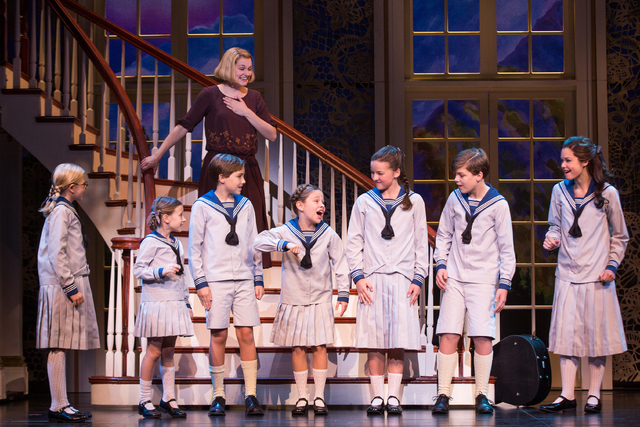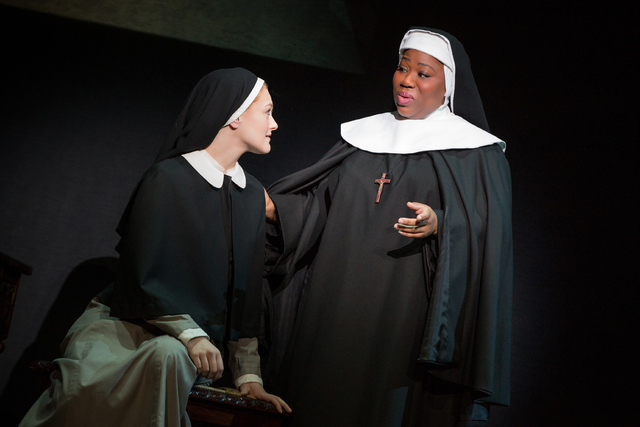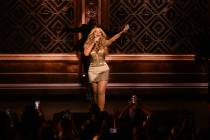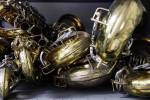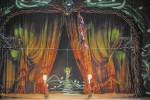Stage version of ‘Sound of Music’ offers stronger story than movie favorite
The hills are alive. And, thankfully, so is “The Sound of Music.”
The latest version of the stage original, that is, which continues its national tour at The Smith Center through Aug. 14.
Those who consider the Oscar-winning 1965 movie version holy writ (and/or have never seen the beloved Rodgers and Hammerstein musical in theatrical form) may be taken aback by some of the differences between stage and screen.
But sit tight and stay tuned. You may discover a few things you never knew — or noticed.
Thanks to director Jack O’Brien (a three-time Tony-winner for productions as diverse as “Hairspray” and “Henry IV”), this “Sound of Music” has new, and welcome, dramatic heft.
Never fear, we’re not talking “King Lear” here.
“The Sound of Music” remains the same family-friendly charmer as ever, with singing kids and singing nuns, blooming romance and looming Nazis. (The play is set in 1938, just before — and after — Nazi Germany annexed Austria.)
Rather than going through the expected motions, however, this production ponders what’s really going on between all those beloved singalong songs.
During some numbers, the approach will make you rethink your response to familiar material — as when Maria (the fresh, ebullient Kerstin Anderson) sings, “I come to the hills when my heart is lonely,” and seems not only lonely but troubled.
An actual inner life for the ray-of-sunshine postulant turned governess to seven motherless children of stern Captain Georg von Trapp? There’s a new one.
Even the crusty captain (quietly dashing Christopher Carl through Aug. 11, Brent Schindele Aug. 12-14) seems at least as heartbroken as he is haughty — not just by the death of his wife but by the threat of the ever-encroaching Third Reich on his beloved homeland.
Not everyone’s so aghast at the Nazis’ arrival, however. Georg’s presumed future fiancee, sophisticated widow Elsa Schraeder (sparkling Teri Hansen), and their impresario pal Max Detweiler (sly, scene-stealing Merwin Foard) reason that there’s “No Way to Stop It,” so they might as well do the Reich thing.
This political angle is largely missing from the movie — as are Max and Elsa’s musical numbers. Both give this “Sound of Music” a surprisingly potent edge.
Fortunately, it’s just enough to balance, not overwhelm, all the raindrops-and-roses sweetness and climb-every-mountain uplift — the latter embodied, inspiringly, by clarion-voiced Melody Betts’ astute Mother Abbess.
This “Sound of Music” boasts a crop of adorable kids (acting more spontaneously kidlike than their movie counterparts) sharing such delightful numbers as “Do-Re-Mi” and “The Lonely Goatherd” with their lovable new governess.
In his 18th collaboration with O’Brien, scenic designer Douglas W. Schmidt creates evocative settings from abbey to mountain (love those color-by-Technicolor Alps), while Jane Greenwood’s pinpoint period costumes and Natasha Katz’s striking lighting augment the atmosphere.
Ultimately, however, “The Sound of Music” depends on the sound of its music to send audiences home happily humming “My Favorite Things” — and reminding them why “The Sound of Music” remains one of their favorite things.
Read more stories from Carol Cling at reviewjournal.com. Contact her at ccling@reviewjournal.com and follow @CarolSCling on Twitter.
Review
What: "The Sound of Music"
When: 7:30 p.m. Thursday and Friday, 2 and 7:30 p.m. Saturday and Sunday; also 7:30 p.m. Aug. 9-12, 2 and 7:30 p.m. Aug. 13-14
Where: Reynolds Hall, The Smith Center for the Performing Arts, 361 Symphony Park Ave.
Tickets: $29-$127 (702-749-2000, www.thesmithcenter.com)
Grade: B+



